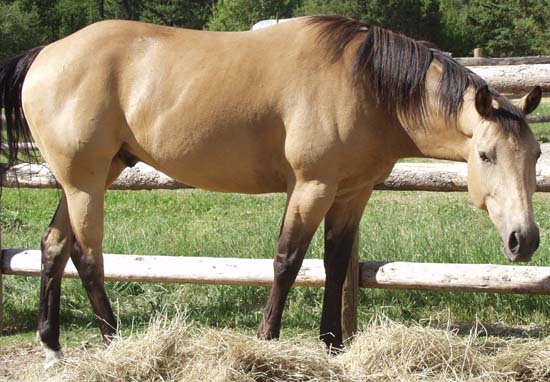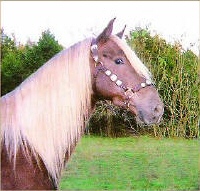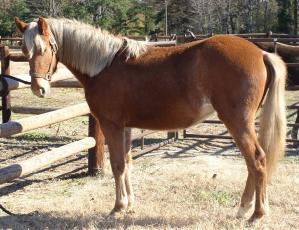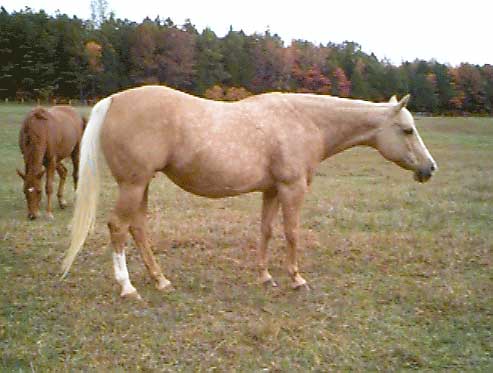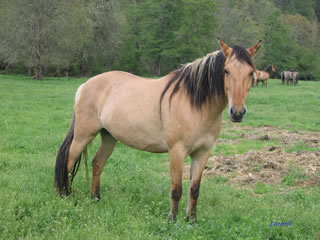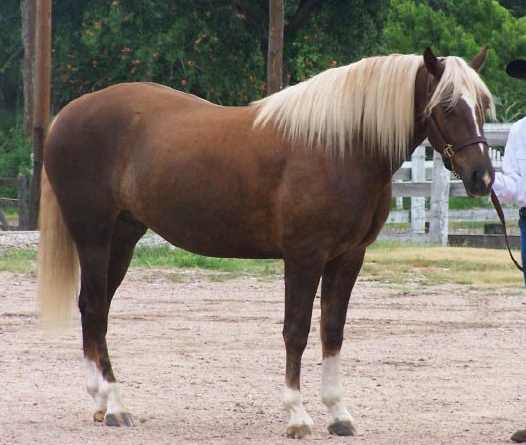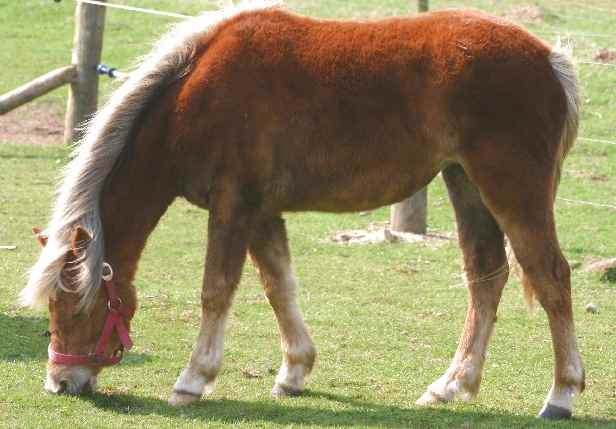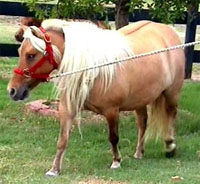Breeders and Breed Societies - Please Be Aware!
Colour descriptions and colour registration information are becoming increasingly important, and it's vital that we do all that we can to keep up with the information available to us in terms of colour genetics and inheritance.
The public can readily access information on horse colour genetics from any number of websites by entering the simplest search terms into Google. The information is no longer 'specialist'.
People are also becoming increasingly litigious - 'compensation' is the buzzword of our time, and many solicitors are all-too-happy to assist on a 'no win, no fee' basis. They will happily work on commission - whatever money they can rake in in compensation for their client, they can claim a percentage of it. It's therefore in their interests to attempt to rake in as much compensation as possible.
Consider the following scenarios.
Case 1. Silver, not gold.
Joe specifies that he wants to buy an animal to use in his 'chestnut-breeding programme'. Joe buys a horse described by the breeder and the breed society as 'chestnut'.
However, the horse is genetically EE - i.e. a black-based coat, having no ability to pass a chestnut gene onto its offspring. It has a silver gene, making it look a bit like a flaxen chestnut, but it is actually a silvered bay. Joe spends several years attempting to breed chestnuts from an animal which is incapable of producing them. Joe gets his supposedly-chestnut horse tested (for a minimal sum!) and discovers that there was no way the animal could ever have chestnut offspring. The animal is therefore 'unsuitable for the purpose for which it was sold'. Joe's solicitor rubs his hands in glee, and puts together a case for the recovery of the following:
- the purchase price of the horse
- x-number of years keep, livery, vet fees, etc. for the horse
- ditto for its non-chestnut foals until they can be sold
- x-number of stud fees (if the horse is a mare)
- loss of value of the horse as it is now older
- compensation for all the devastating emotional hardship caused to Joe
- ... plus of course recovery of the costs of bringing the case to court
- ... and the person being sued for all this will have to cover his own legal costs in attempting to defend it.
This is starting to look like a lot of money. The case is indefensible, the scientific evidence is irrefutable, so Joe is going to win it.
Case 2. Alas! - we are un-dun!
Fred buys a number of horses described as 'dun'. He buys them specifically because he wants to breed dun horses, and states that this is why he is buying them.
However, all his 'alleged dun' animals are in fact buckskins. They not only have no dun gene, but they all have the cream gene. Fred starts breeding them together. He stands his stallion at stud for other prosepective 'dun-breeders'.
Shock, horror! One in four of the foals produced from all these matings turns out to be a (possibly un-registerable) double-cream dilute. They look like this:
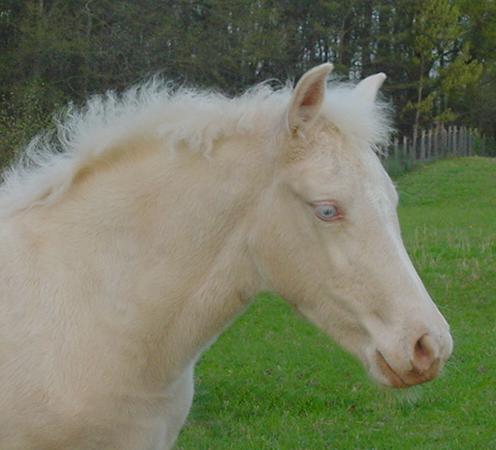
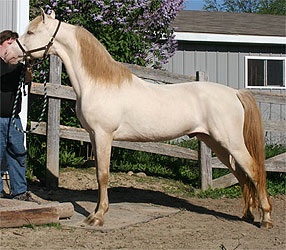
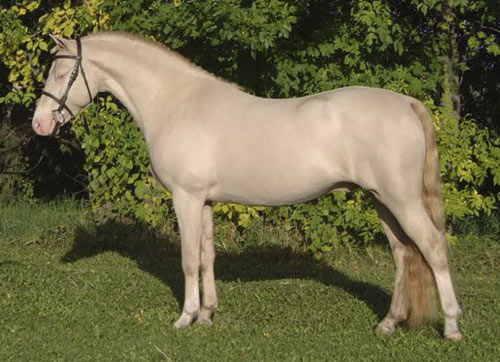
Cremello: double-cream dilution on chestnut base coat
(Morgan fillly 'Moonbow':
photo courtesy of
Laura Behning at colormorgans.tripod.com
)
Fred gets his supposedly-dun horses tested (for a minimal sum!) and discovers that they were all cream-gene dilutes. The animals are therefore 'unsuitable for the purpose for which they were sold'. Fred's solicitor rubs his hands in glee, and puts together a case for the recovery of the following:
- the purchase price of the horses
- x-number of years keep, livery, vet fees, etc. for the horses
- ditto for all the un-dun foals until they can be sold
- the difference in value between dun and his double-cream dilute foals
- a sum to cover Fred if all the people who have brought their mares to his un-dun stallion(s) demand their stud fees back
- a sum to cover him if all those people sue him for keep and costs of their mares while carrying un-dun foals
- loss of value of the horses as they are now older
- compensation for all the devastating emotional hardship caused to Fred
- ... plus of course recovery of the costs of bringing the case to court
- ... and the person being sued for all this will have to cover his own legal costs in attempting to defend it.
Again, this could be a lot of money.
Jon subsequently discovers that his colt had no cream gene. His solicitor ... well, you can probably guess the rest! All those stud fees! Not to mention the loss of potential reputation as a breeder ....
However, the real tragedy (for the breed) is yet to emerge. Jon's golden dun mare has died, and he searches (in vain) for a replacement dun. But all the 'duns' he can find in his breed are actually buckskins. The dun gene has been irrecoverably lost from the gene pool, because silver / dun combination colts have been barred from the breeding registers.
Breed societies - please don't eliminate the irreplaceable! And the answer is NOT to say "Oh, we'll just eliminate the silver gene as well to justify what we did in the past....".
What Else Can Go Wrong?
The tragedy for the breed societies runs like this. The solicitors get together and decide that the ultimate responsibillity for all this lies with the breed society itself, as the breed society is responsible for registering the correct colour information. They bring what is known as a 'class action' against the breed society. The Court rules that the information was all available to the breed society, and the breed society is ultimately responsible for all these losses. The breed society is humiliated and disgraced. The breed society's insurers rule that they will no longer insure the society against legal costs or awards for damages for anything related to registration of colour. Within a few years, the breed society goes bankrupt.
Further complications arise when the top-flight competition horse (registered and passported as 'dun', but actually buckskin) is presented for inspection pre-competition, pre-sale or pre-export. The inspecting authority compares horse to passport, and refuses to allow the animal to compete / be exported, or pass it for sale, as there is a suspicion of attempting to 'run a ringer' - i.e. pass off one horse as another. The passport clearly says a dun horse is expected, but the horse in front of the inspecting authority is not a dun. It's a buckskin. Mayhem! Breeding and registration for the entire line of antecedents and descendants of that animal have to be verified by DNA testing. Previous competition results and qualifications are called into question, and the owner faces investigation for possible fraud. The same can apply in an insurance claim - a valuable animal registered as 'dun' is found dead in its field, but the insurance company refuse to pay out as the corpse is a buckskin. Insurance fraud is suspected.
Avoiding these ultimate scenarios is not difficult.
- Make use of the correct colour names wherever humanly possible. There is no need to invent new names - just use the ones already being used elsewhere, which are universally recognised.
- When in doubt, register animals as (for example) "Liver chestnut / chocolate flax (unconfirmed)"; "Flaxen chestnut / silver bay (unconfirmed)"; "Dun / buckskin (unconfirmed)"; "Silver gold dun / palomino (unconfirmed)" - UNTIL genetic confirmation has been obtained.
- Keep up-to-date with the genetics of colour and be flexible in accommodating the new knowledge!
Taking any other stance is not only 'genetically irresponsible' (as colour genes can be accidentally and irrecoverably lost from the gene pool), but is also financially perilous. The time to start acting is now - not in five years when it's likely to be too late.
The table below shows one of each colour in each column (in random order!) How much are we prepared to gamble on what our eyes tell us?
